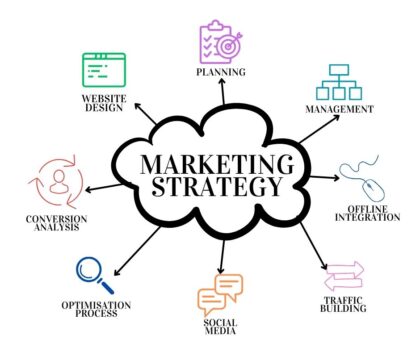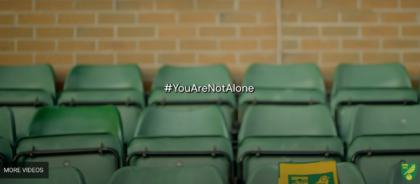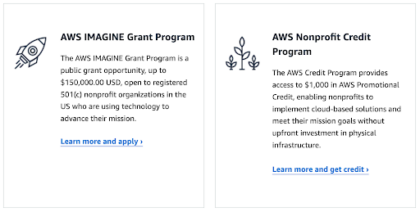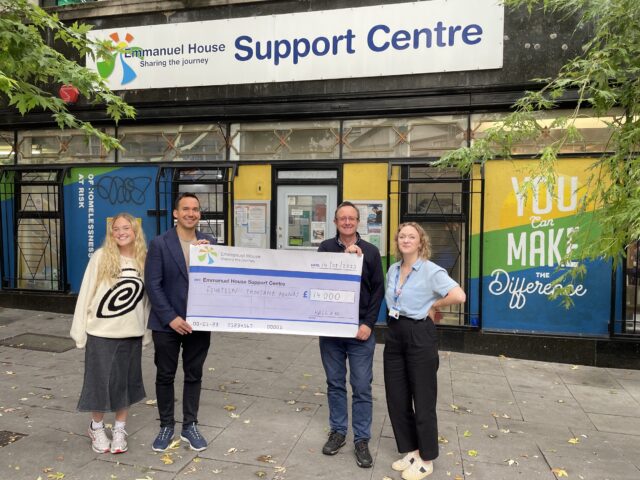A robust advertising strategy is essential for any company looking to increase demand and grow their business. However, budgets can be tight in this increasingly difficult economic climate, especially for charities, and can make advertising a tricky part of your marketing strategy. Here we delve into our key tips for successful advertising as a nonprofit organisation.
Be clear with your goals
Every good marketing strategy should start with market orientation and research in order to avoid basing your marketing tactics on assumptions you’ve made about your sector or customers. Laying the foundations of your marketing strategy properly will ensure you set clear goals as a charity.
Once you find your “super goal” – which is likely an overall fundraising/revenue target – you can clearly lay out the overarching objectives that feed into that and the tactics that make up those objectives. When choosing tactics it’s just as important to choose what not to do so you can ensure your focus is going into the right areas.
Fuelling your marketing activity with advertising means you’re much more likely to achieve objectives quicker than if you relied purely on organic efforts but you must be crystal clear on how advertising plays into your objectives. Whether it’s increasing traffic to your website through search ads or increasing the volume of donations through paid social, setting clear goals will guide your ad campaigns and help you measure the impact of them.

A holistic strategy
Charities are likely to be impacted by ever-changing factors like government funding or national and international events and crises while eagerly competing with other charities for mental availability and market share. It’s a difficult space to navigate and charities may be required to pivot strategies more frequently than other sectors. A holistic strategy allows you to lean on non-paid elements of marketing to enhance your advertising when things are tough and budgets are low.
To cut costs, repurpose content for advertising and be mindful of how a piece of content can be used in different ways when creating it. Whether you edit a compelling TV ad into bite-size paid social assets or you repurpose your direct mail collateral into ad copy for your Search ads, this is definitely an effective approach for charities. Cancer Research UK does holistic advertising very well; we see their television ads portrayed on billboards, direct mail and social media posts. Once you’ve mapped out your marketing plan for the year, cross-check how each piece of work can be repurposed for other projects.
Remember to consider how different channels can best serve you with tips around some of the core channels below:
Facebook: be seen by the masses and a broad age range of people scrolling in their personal time. Great for resonating with people and driving traffic to your website.
Instagram: perfect for storytelling and engaging a younger, visually-oriented audience who will often share the great content they see.
Search: show up for those actively seeking your brand or the services you offer by having a robust paid and organic search strategy.
LinkedIn: when wanting to target and connect with businesses or even recruit, LinkedIn is the go-to platform.
Programmatic: whether it’s for display, native, video, CTV or DOOH campaigns, running campaigns programmatically is key for mass brand awareness.
YouTube: YouTube ads can be a low cost alternative or addition to TV campaigns and can use the exact same video content for ease.
Win people’s hearts
Charities rely so heavily on voluntary donations so ultimately content has to resonate with users and make them feel emotionally compelled to support your cause, especially when charity often comes secondary to everyday essentials and even materialistic purchases, too.
Last year, Samaritans partnered up with Norwich City FC with a heartbreaking film that was released ahead of World Mental Health Day. The powerful suicide prevention campaign urged people to check in on each other and not to assume how people are really feeling. The campaign was so impactful across TV and social channels online users fuelled the success of the campaign by sharing it of their own accord and conversations about the campaign permeated offices and homes.
This is exactly the kind of brand awareness campaign that is crucial to the success of charities. Brand awareness campaigns focus on longer-term success than conversion campaigns and metrics such as impressions, traffic to site and brand uplift – one of the key ways to measure brand awareness is through Share of Search. Be clear with your message and transparent about how your purpose is going to better the world while encouraging users to take action. Equally, embrace storytelling techniques to connect emotionally with your audience.

Nail down the basics with Google Ad Grants
The best free advertising support on offer for nonprofits is a Google Ad Grants account; Google offers up to $10,000 USD in ad spend per month for your charity to gain traffic through paid search.
A Google Ad Grants account does list more requirements for your ads than a regular Google Ad account and so needs continuous maintenance to ensure that you’re sticking to these requirements which include:
- No single-word keywords permitted
- No keywords with a quality score of 1 or 2 permitted
- Must maintain a 5% click-through rate (CTR) each month
- Must have valid conversion tracking, if applicable
- Must have at least 2 ad groups per campaign
- Must have at least 2 sitelink ad extensions
- Must respond to annual program survey sent out by Google
Our advice to charity marketers would be to secure a Grants account regardless of whether the ongoing management is outsourced to an agency or looked after by your team internally. See Google’s support pages to help you set up or read more about Google Ad Grants accounts via our blog. Google has also talked about an Ad Grants Pro offering businesses up to $40,000 per month in the future so watch this space.
If you’re based in the US, Amazon Web Services (AWS) offers its own Grant account which you can find out more about here.

Every penny counts
For smaller charities with limited advertising budgets, every penny spent must be properly considered.
Ensure you spend dedicated time on thorough data analysis. Whether you measure your marketing efforts via Looker Studio or via your CRM, keep a close eye on the efforts that generate the best return and pivot your marketing strategy accordingly. You can read our blog about PPC measurement in 2024 for further guidance. Create a testing framework throughout the year and test new platforms, creatives and audiences over the course of the year so you can take your learnings and fuel the next campaign, creating greater efficiency over time.
Marketing conferences can help keep your team’s knowledge up to date, along with following publications like The Verge and Search Engine Journal on LinkedIn, X (formerly Twitter) and subscribing to newsletters. Your budget may not be able to stretch to a full-time agency retainer: in-housing or up-skilling your internal teams can be a good alternative.
Find out more about our paid media services at Hallam, including our overwatch consultancy and training opportunities. If you need expert advice, get in touch.





